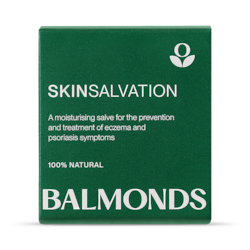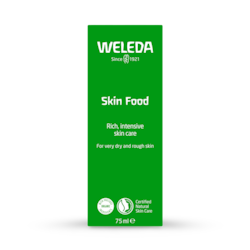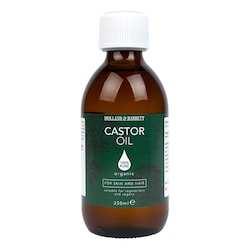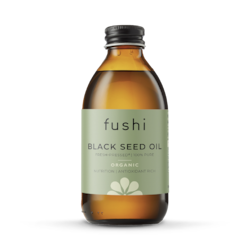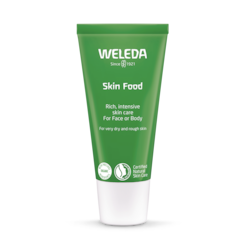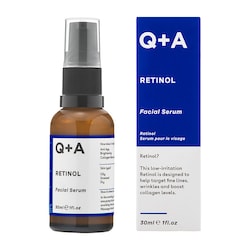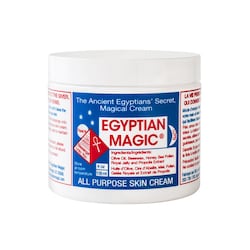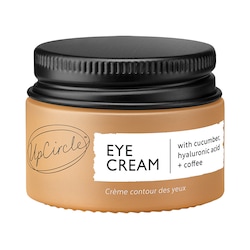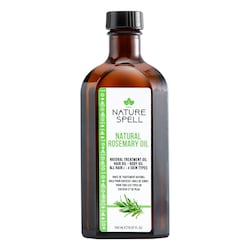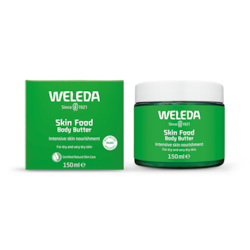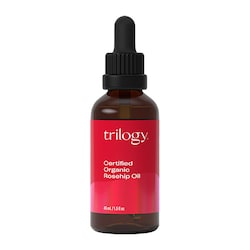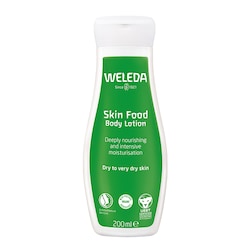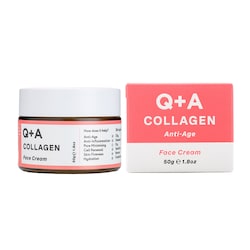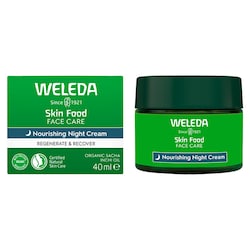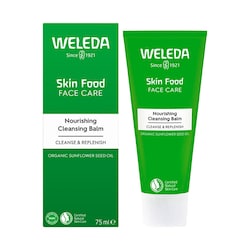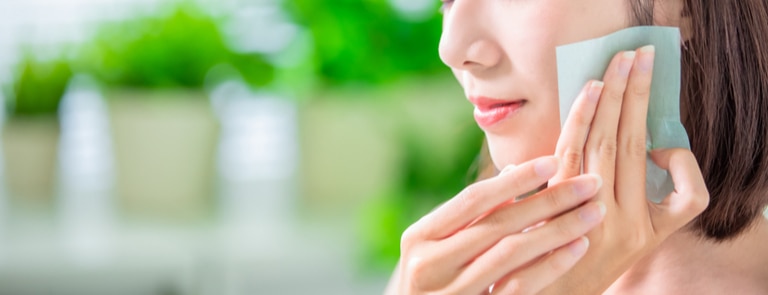15% off £30 OR 20% off £40
Code:DECIDE
The good, the bad, & the uglies: How to get through the retinol purge

You’ve probably heard about the wonders of retinol. But what about the “purge”? No need to panic – here’s our survival guide…
Summary
1When does the retinol purge happen?
Purging usually happens in the first couple of weeks of starting retinol. If you’ve seen nothing in the first month, you might be in the clear!
2How do I know if I’m “purging” or breaking out?
It might be that your blemishes are down to something completely different - in which case, you don’t want to shrug it off as a passing purge...
3Any day now…
The countdown to less flaky days is on! For most people, persevering through the retinol purge is the best bet. However, you might want to see your...
You’ve seen it in the movies - but the purge could be coming to your skin.
Retinol has a skin-saviour status right now.
Believed to smooth the appearance of fine lines and help even out your complexion, this vitamin A derivative is popular amongst those wanting to minimise the appearance of fine lines, wrinkles, and blemishes.
It speeds up your natural skin cell turnover and stimulates the production of collagen – the substance that makes our skin plump and elastic.1
Collagen is famed for giving skin its youthful, smooth appearance and can help to minimise the appearance of fine lines, enlarged pores, and wrinkles.
But there’s a secret step you might not have seen: the purge. Also glamorously known as “the retinol uglies”, it’s the stage where your retinol skincare brings all your hidden spots to the surface at once.
It’s easy to spot these blemishes and run a mile - but the purge is temporary!
It doesn’t happen to everyone, but many people find their breakouts worsen before they get better when they start using a retinol product.
Of course (as with any new skincare product) you’ll want to conduct a patch test 24 hours before using retinol for the first time.
When it comes to the purge, powering through is usually the key. Here’s how...
What is the retinol purge?
Retinol is a derivative of vitamin A and is commonly used in skincare products.

It speeds up your skin cell turnover, shedding dead cells faster than ever to reveal the shiny new ones beneath. However, this also means it accelerates the way you naturally get blemishes.
Sometimes, breakouts can take weeks or months to form: they’re the product of dirt and oil that’s accumulated under the skin for some time.
So, retinol’s faster turnover means it brings all these “future” spots to the surface at once. Hence…the purge.
So, retinol’s faster turnover means it brings all these “future” spots to the surface at once. Hence…the purge.
When does the retinol purge happen?
Purging usually happens in the first couple of weeks of starting retinol. If you’ve seen nothing in the first month, you might be in the clear!
How long will the retinol purge last?
This varies, but you can expect the purge to last anywhere from 2 weeks to 3 months.
If you’re seeing results for longer than 3 months, you might want to consult your GP or dermatologist.
But first, be sure your skin concerns are definitely related to retinol…

How do I know if I’m “purging” or breaking out?
It might be that your blemishes are down to something completely different - in which case, you don’t want to shrug it off as a passing purge.
- Spots tend to come and go very quickly
- They’ll generally affect your “problem” areas (i.e. if you’re prone to blemishes on your chin, your purge will most likely affect your chin, too)
- Your skin may appear rough or flaky. If this is paired with redness or a burning sensation in your skin, slow down but don’t stop. You may be using retinol too often or applying too much at a time.
- The process happens more slowly - your blemishes will take 8-10 days to develop and will stick around for longer
- You might see blemishes in new areas Your skin might look red and feel sensitive, oily, or itchy
If you think you are indeed going through the retinol purge, don’t panic…
1. Know that it’s common
It’s hardly glamorous, but “purging” is a natural part of the retinol process. You can’t have clean, clear skin if your body doesn’t push out what’s in there first.
Don’t be put off by the seamless glow-ups you might see on social media. Some are lucky enough to have a smooth transition, but others might not be showing the full picture.
It’s okay for it to be a knock on your confidence, too. Chances are you’ve spent a lot of time getting to the point your skin is now.
Fortunately, a true purge is temporary. Given you’re being kind to your skin and not reacting poorly to anything else, you’ll make it squeaky-clean through the other side.

2. Start low and slow
AND WEAR SPF. If you learn one thing from this, be sure to use an SPF of at least 30 every day - but especially while you’re using retinol.
Because it’s an exfoliant, retinol leaves your skin particularly susceptible to UV rays. You’ll need to top up every two hours (or after sweating or getting your face wet) for ultimate protection.
UV is harmful at the best of times and is the leading cause of skin cancers. Look for a “broad spectrum” SPF; this protects against both UVA and UVB rays.
Apply retinol in the evenings so your skin has time to recover before you brave the sun in the morning.
It’s also crucial not to go overboard when you start retinol - it’s a helpful but potent product. Do a patch test before you use retinol for the first time.
Apply a pea-sized amount once or twice a week. Then, you can work upwards if your skin’s reacting well.
Use retinol on clean, dry skin and avoid the eye area.
3. Be gentle on the skincare
Being gentle might mean you have to step down in other areas of your skincare.
Skip your exfoliator, since retinol already shifts dead skin cells. If you decide to keep exfoliating, use a gentle solution and minimise application to about once per week. Stop if you notice your skin becoming sensitive.
You’ll want to avoid chemical exfoliants like AHAs and BHAs, too, since they can be harsh on your already sensitive skin.
These might include lactic acid, salicylic acid, and glycolic acid among others – so check your skincare labels.
Moisturise, moisturise, moisturise. Again, a gentle hydrating lotion is best.
The debate’s still out on whether you should apply moisturiser before or after retinol.
Applying retinol, then moisturiser, has a greater absorption rate. Some experts recommend waiting about 20 minutes to allow the full effects of the retinol to take place.
Applying moisturiser first will create a light barrier and is potentially useful for sensitive skin. You might want to introduce your retinol even more gradually by mixing a few drops into your facial moisturiser.
This will dilute it and give particularly sensitive skin the chance to adapt. Then, if all goes well, you can increase the concentration.
4. Leave the spots alone
It might be tempting to whack on a shelf full of new products when you sense the purge is near.
Your skin’s feeling fragile right now and most likely wants to stick with what it knows.
Sticking to your usual gentle, non-comedogenic cleanser, toner, moisturiser, and SPF is your best bet.
Don’t even think about picking your skin during the purge. It’s tempting, sure, but harken back to your teenage breakouts and you’ll remember why it’s a mistake.
Touching your face could introduce new bacteria and dirt into your already sensitive skin and delay your way to a smooth, clear complexion.
If you’re a chronic face toucher - many of us are - try to keep your hands busy in other ways. Pop a note on your bathroom mirror or computer screen.
If you must make contact, use a clean tissue instead of your hands.
Any day now…
The countdown to less flaky days is on! For most people, persevering through the retinol purge is the best bet.

However, you might want to see your GP or a dermatologist if:
- You’re experiencing the purge for longer than 3 months.
- You’re having “breakout symptoms” with no identifiable cause for more than a few weeks.
But hopefully, you’re on your way to an even complexion and baby-soft skin. See you on the other side!
The advice in this article is for information only and should not replace medical care. Please check with your GP or healthcare professional before trying any supplements, treatments or remedies. Food supplements must not be used as a substitute for a varied and balanced diet and a healthy lifestyle.
Last updated: 10 August 2022



